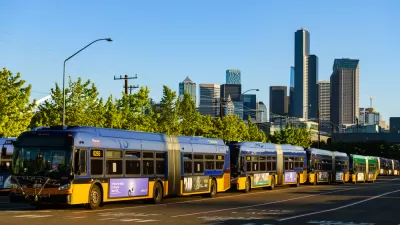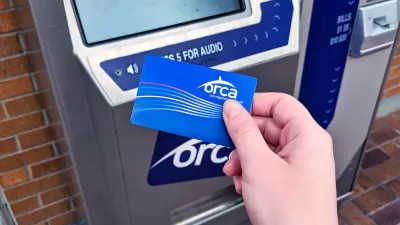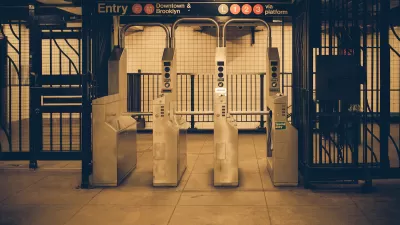While some of the country’s largest transit operators are cracking down on fare dodgers with expensive—and often cumbersome—turnstiles and gates, others are looking deeper to address the root causes of fare evasion.

“Fare evasion is a topic that rears its head regularly; it’s a staple of local TV news and a frequent target of high-profile crackdowns,” write John Surico and Lillianna Byington in Bloomberg CityLab. With ridership still well below pre-pandemic levels and many transit agencies facing a fiscal cliff, transit operators are cracking down on fare evasion even more severely.
But “At the same time, targeting riders with heavy-handed policing in the wake of a deadly pandemic that revealed the inequities of public transit in the US carries with it a tone that didn’t exist before. As does millions of dollars in spending that doesn’t appear to match the cost of the issue it’s trying to address.” Meanwhile, “technological solutions have been elusive, as dodger-resistant turnstiles can be both expensive to install and difficult to use, slowing boarding, limiting accessibility for wheelchair users and irritating paying riders.”
“Critics of fare evasion enforcement often cite the high expense of curbing it,” with a 2018 Streetsblog article pointing out that New York City’s MTA planned to spend $249 million to save $200 million in fare evasion. “Interactions with law enforcement can also pose physical risks, both to riders and transit staffers: Earlier this week, three members of the New York MTA’s Eagle Team, which works to combat fare evasion, were fired at by a bus rider over an unpaid fare.”
To address the problem in new ways, some cities are experimenting with diversion options in lieu of citations, allowing people to pay for transit with EBT cards, or eliminating fares—and the costs of fare collection and enforcement—altogether.
FULL STORY: The Real Costs of Curbing Fare Evasion

Alabama: Trump Terminates Settlements for Black Communities Harmed By Raw Sewage
Trump deemed the landmark civil rights agreement “illegal DEI and environmental justice policy.”

Study: Maui’s Plan to Convert Vacation Rentals to Long-Term Housing Could Cause Nearly $1 Billion Economic Loss
The plan would reduce visitor accommodation by 25% resulting in 1,900 jobs lost.

Planetizen Federal Action Tracker
A weekly monitor of how Trump’s orders and actions are impacting planners and planning in America.

Restoring Northern India’s Himalayan ‘Water Temples’
Thousands of centuries-old buildings protect the region’s natural springs and serve as community wells and gathering places.

Milwaukee to Double Bike Share Stations
Bublr Bikes, one of the nation’s most successful, will add 500 new e-bikes to its system.

DC Extends Application Window for Outdoor Dining Permits
District restaurants will have until the end of November to apply, but businesses with permits in rush hour parking lanes must end operations on July 31.
Urban Design for Planners 1: Software Tools
This six-course series explores essential urban design concepts using open source software and equips planners with the tools they need to participate fully in the urban design process.
Planning for Universal Design
Learn the tools for implementing Universal Design in planning regulations.
Caltrans
Smith Gee Studio
Institute for Housing and Urban Development Studies (IHS)
City of Grandview
Harvard GSD Executive Education
Toledo-Lucas County Plan Commissions
Salt Lake City
NYU Wagner Graduate School of Public Service





























